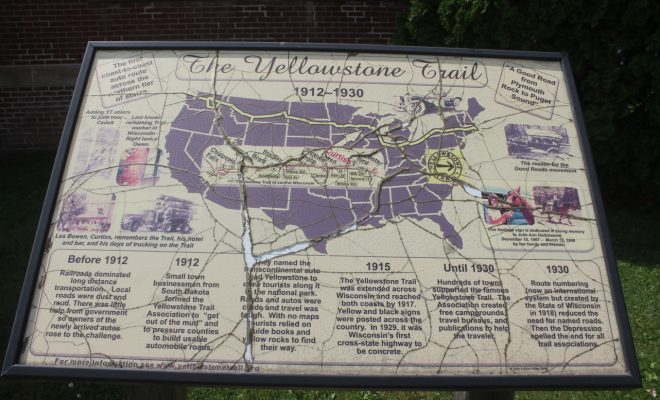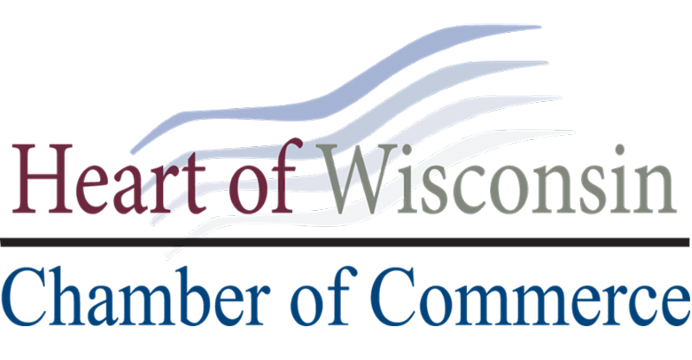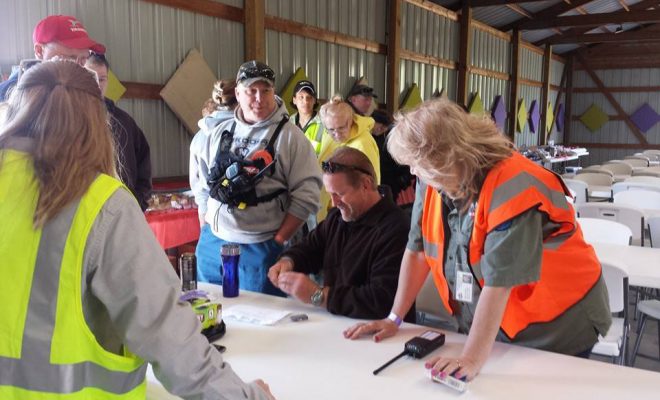Blazing a trail: The Yellowstone Trail and Wisconsin’s road system

By Kris Leonhardt
CENTRAL WISCONSIN – With railroads the major form of transportation in 1912, few all weather roads existed in the northern portion of our young country.
As automobiles slowly made their way into the country, a need for a road system soon followed.
In 1895, there were only a couple of hundred cars in the United States, but by the end of 1900, there were thousands and car manufactures, Ford, GM, and Chrysler were building more each day as car manufacturing hit its stride in America.
As the allure of autonomy drew Americans toward car ownership, auto clubs began to form.
But drivers yearned for quality driving routes, free of sand, mud, and potholes.
In the early days of automobile transportation, financing of roads was left to the local landowners and townships.
An idea conceived by Joseph William Parmley would changed all of that, placing the responsibility in the hands of entire communities and those that would benefit from the traffic passing through the region.
In April 1912, Parmley and business colleagues pioneered 25 miles of quality roadway between Ipswitch to Aberdeen, South Dakota. That was later expanded to provide tourists with access to Yellowstone National Park.
That move would spurn the creation of the first transcontinental auto route in the northern portion of the country.
From Plymouth Rock to Puget Sound
In October 1912, the Yellowstone Trail Association was formed to help build an auto route from “Plymouth Rock to Puget Sound.” The grassroots effort was designed to lobby for good roads and promote cross country tourism, by developing local and state association chapters.
“The Yellowstone Trail is not merely an organized highway. It is preeminently the organized highway of all the world,” said Yellowstone Association General Manager H.O. Cooley in a Kenosha News article. “The Yellowstone Trail Association is merely the name of a partnership by which towns and communities along its route clear across the country may work for their mutual advantage in all things which encourage travel by automobile for long distances to their particular communities.”

A sign marking the trail on the corner of Eighth Street and Washington Avenue in Marshfield. City Times staff photo
Headquartered in Minneapolis, promoters and representatives crisscrossed the Midwest enacting communities to join the cause along a route selected, due to road quality and access to amenities.
Association representative, O.T. Peterson told local government administration and local merchant and manufacturer representatives at a May 1915 meeting, “the northern Wisconsin route from Minneapolis to Chicago had been selected on the advice of Minneapolis and St. Paul people, and against the sentiments of Chicago and Milwaukee people, who preferred the Madison-La Cross route.”
The northern route, however, was shorter by some 30 miles.
The northern route also offered “everything the tourist desires in the way of scenery in summer. It has cool nights, good hotels and supply stations, and is without long jumps between cities where water, gasoline, food, and lodging can be secured,” Peterson added, as chronicled in The Oshkosh Northwestern.
Building the trail
As Marshfield representatives celebrated “Trail Day” on June 7, 1915, representatives from Grand Rapids – now Wisconsin Rapids – were fighting for a route change. Rapids was asking for the trail to be rerouted to their city and then onto Waupaca, bypassing Stevens Point and Amherst. Grand Rapids representatives argued that the trunk line road between Marshfield and Rapids was “fully graded” and already improved upon. But Stevens Point won the dispute and Trail Day in Amherst was celebrated in July.
Trail day was a combination celebration/trail building event in each community.
A few years later, Grand Rapids came back to lobby for a trail change again, with the chamber of commerce there declaring that “not a town between Marshfield and Waupaca had paid the 1920 assessment.” But, once again, Stevens Point, Amherst, and Amherst Junction fought for their place on the trail, and won.
The Wisconsin portion of the trail eventually covered 406 miles traveling through 18 counties, joining Kenosha, Rachine, Cudahy, Milwaukee, Slinger, Lomira, Fond du Lac, Oshkosh, Neenah, Menasha, Dale, Fremont, Waupaca, Amherst, Stevens Point, Junction City, Auburndale, Hewitt, Marshfield, Spencer, United, Colby, Abbotsford, Curtiss, Owen, Withee, Thorp, Stanley, Boyd, Cadott, Chippewa Falls, Eau Claire, Menomonie, Woodville, Baldwin, Roberts, Hudson, and points inbetween.
The trail was identified with yellow bands on trees and poles, yellow arrows painted on buildings, yellow painted rocks, the initials “YT,” and signage in black and yellow.

This North Fond du Lac building was known as the This North Fond du Lac building was known as the Yellowstone Garage for almost five decades. Mark Mowbray photo
The trail created a superhighway for its time, connecting communities and drawing tourism through the northernmost portion of the country.
The association developed campgrounds, travel bureaus, amenities, and tourism publications in the communities that helped build the trail, drawing travelers to the communities on the route.
The trail slowly fades
In 1918, Wisconsin became the first state to number highways and in 1919, much of the trail was designated as State Highway No. 18, which later became U.S. route No. 10.
In 1926, interstate roads were selected from the best roads in the state, and the need for colored markers faded away.
In 1929, the Great Depression hit and traveling waned and soon the Yellowstone Trail Association faded away.
With auto traffic growing and state and federal money poured into the roads, hard surfaces developed, as curves and hills were smoothed over.
Signs of the trail
Over the past several decades, some Wisconsin communities have worked to bring back the historical significance of the trail, reestablishing markers along the state trail.
In April 2006, the Chippewa County Historical Society, Chippewa County Highway Department, and the city of Chippewa Falls street Department became the first Wisconsin county to remark the entire trail in Chippewa County with highway signs.
Many signs, directionals, and monuments exist along the trail today, while some businesses and community amenities retain the “Yellowstone” name – all hidden signs of the trails former glory and its significance in the development of our Wisconsin road system.







